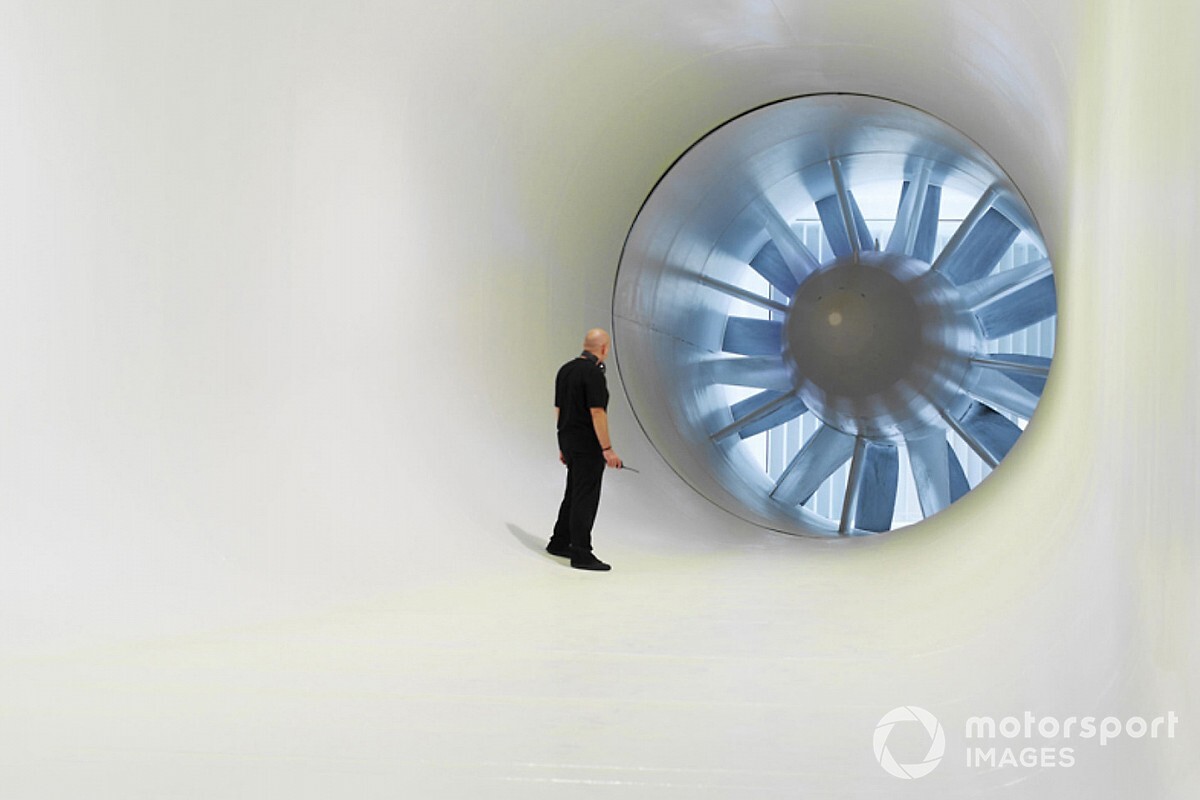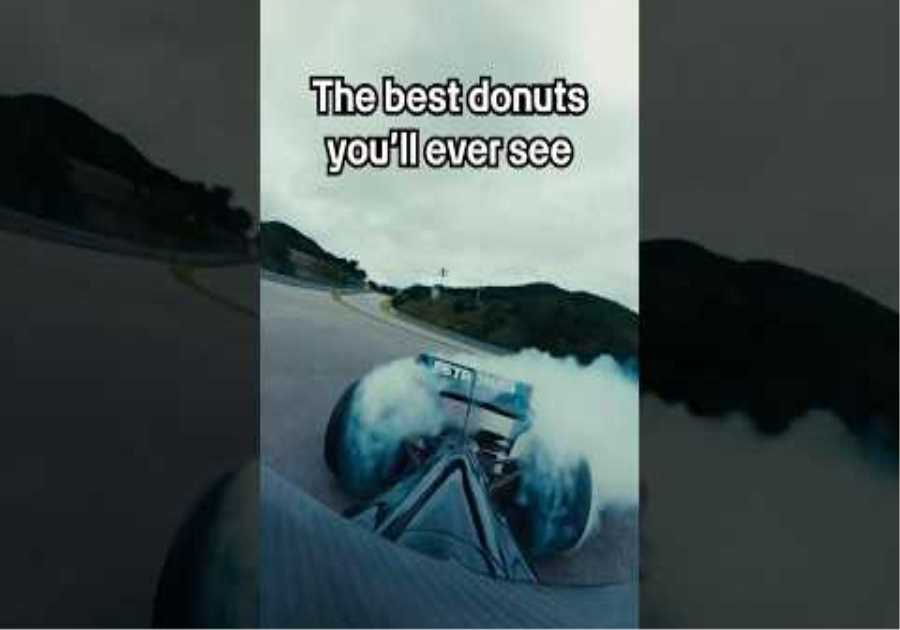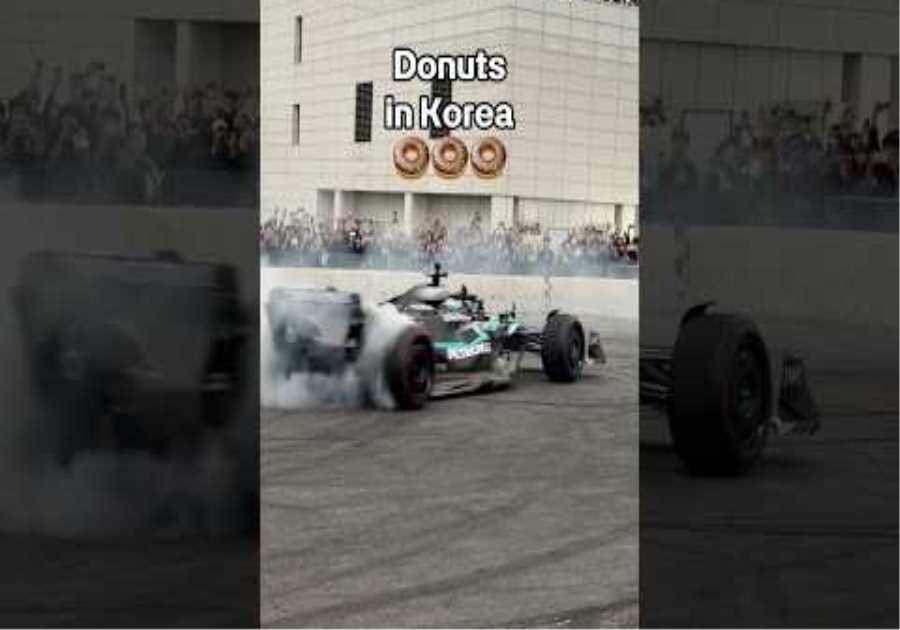
Could Formula 1 really work without wind tunnels and focus exclusively on CFD from 2030?
That is the hope of many athletes, and the plan is supported by the majority of team bosses for the time being.
It was discussed at an F1 commission meeting late last year and, in an exploratory vote, eight teams out of ten supported the rationale.
The vote was on a “letter of intent” on something that probably seemed far away at the time. However, any decision that sticks to the 2030 schedule needs to be made sooner rather than later for everyone to plan for the change. So the debate is not over yet.
The idea of an F1 wind tunnel ban is still, to some extent, shaped by the Virgin team’s much-touted efforts to focus on CFD for its 2010 machine, which was hardly a great advertisement for an ambitious strategy at the time.
Technology has advanced massively since then, and racing cars in other categories have been developed entirely via CFD.
Timo Glock, Virgin VR-01 Cosworth
Photo by: Charles Coates / Motorsport Images
The F1 organization is fully behind a move away from wind tunnels. In-house engineers focused on CFD as they helped the FIA define the 2022 rule package. However, this research became more effective as it did not need to adhere to the FIA restrictions on CFD resources applied to the teams. It therefore had some powerful tools.
There are two obvious reasons for trying to abandon tunnels. First, there is the environmental impact related to the energy demand of wind tunnels. Because of this, the plan coincides with the 2030 date given by F1 to make the sport carbon neutral.
Tunnels use enormous amounts of electricity – one estimate is that a typical team bill is worth over £ 1 million in a year. Multiply that for the 10 F1 teams and you can see why the bosses of the sport are keen to curb this, even if some competitors – Mercedes in particular – have made renewable energy use an advantage.
Aside from the sustainability issues, the enormous cost itself is substantial. The budget ceiling will only go in one direction in the coming years, and that is downward. Teams must continue to look for ways to cut their expenses without detracting from the relentless pursuit of performance. Take wind tunnels out of the equation and there is a considerable saving.
The tunnel costs are not only related to the energy bill, but also to the personnel required to operate and maintain them. There is also the cost of model making departments, which includes salaries as well as materials and machinery.
Teams are cautious about accurately quantifying the annual cost of running a tunnel, but estimates start at £ 5m. Those who don’t have their own tunnels and instead rent time elsewhere typically pay around £ 25,000 per day, which adds up over a season and doesn’t include any model costs.
Lewis Hamilton, Mercedes W12, Max Verstappen, Red Bull Racing RB16B and Valtteri Bottas, Mercedes W12, are preparing to lead the field away for the start
Photo by: Steve Etherington / Motorsport Images
CFD supercomputer systems are also very energy-consuming and require extensive cooling – think of the current debate about the resources consumed by Bitcoin mining. However, it’s still less than tunnels require.
For many years the teams had complete freedom to split their research and development work between CFD and tunnels. The current restrictions on aerodynamic tests, as set out in the FIA sporting regulations, prescribe very specific limits for tunnel runs and CFD use. An inverted scale – based on last year’s championship position – is now used to help the less competitive teams.
These rules could be slightly adjusted in the years to come to encourage teams to give preference to CFD as the tools keep getting more powerful. But could the FIA really require teams to only use CFD?
The key is to consider where the technology will be by 2030 – and how Moore’s Law, the theory that computing power doubles every two years, will play out.
This process also helps reduce costs, making the computing power required cheaper. On the other hand, while keeping pace with the latest technology, the price of building a new tunnel will only go up.
The teams are understandably suspicious of the sport and definitely commit to getting out of tunnels, but the long lead time gives them a little wiggle room.
“I think all teams are open to discussion,” says Ferrari’s Mattia Binotto. “And open to accepting it at some point, because it’s still a long time to come.
“Are we ready today to ban the wind tunnel? Not at all. I think in general it has always been about design simulations and tests, and testing is still very important, whatever it is – aerodynamics, engines, etc.
“I think that we are already reducing the hours in the wind tunnel in order to cut costs, which is a step in the right direction.
“If you banned it completely today, the testing would be on the right track, and it would be even more expensive than doing it in the wind tunnel. So I think the times for a decision are not ripe today.”
Wind tunnel model
Photo by: Lotus F1 Team
“The risk is that people lose the correlation with the route,” says Marcin Budkowski from Alpine. “And the tunnel is an important element of that. F1 loves a challenge, and I think if you tell us that in 10 years we will move away from something that is essential to development because we will speed up the simulation. Part of it I think it can be done. “
One of the big proponents of switching to CFD is Red Bull Racing, a team known for their excellent aerodynamics and of course led by Adrian Newey. He fully supports an eventual ban, noting that “wind tunnels were great but served their purpose”.
His team boss is also very interested in seeing things change.
“That is a topic that I raised a few months ago,” says Christian Horner. “A wind tunnel is not particularly efficient, it is not very environmentally friendly.
“The way CFD evolves so quickly – for example, the Valkyrie never went into a wind tunnel during its entire development phase – I think if you look at this for 10 years it’s far enough away that these dinosaurs are effective from machines that use a lot of electricity and electricity are a thing of the past. F1 should be the latest state of the art. “
Horner points out that F1 is attracting more high-tech partners and sponsors who could help provide the computing power it needs. In contrast, wind tunnels represent a capital expense.
“We’re seeing more and more investment from technology. So why not be the showcase for this technology with F1?” he says. “I think when it’s about 10 years away there is a glide path that every team knows is coming and you adjust your investment accordingly over time.”
This is an important point. Some teams have relatively new or recently upgraded tunnels that do not require large investments in the years to come. However, others, particularly Aston Martin and McLaren, plan to build new facilities that will now have a relatively short lifespan.
Max Verstappen, Red Bull Racing RB16B
Photo by: Steven Tee / Motorsport Images
Despite the prospect that its new tunnel will be obsolete in less than a decade, Aston Martin continues to intend to make the investment.
“We are now planning to build a tunnel,” says Otmar Szafnauer. “I think aerodynamics are still a big differentiator in our sport, and having your own or not having your own can be beneficial. That might be the right way to put it.”
“Right now we are seriously thinking about building the tunnel, and we will probably tackle it soon. The question of 2030, if we finish it in a couple of years, there is still a decent amount of time I think there is, one to use the new tunnel. “
Teams like Aston and McLaren, who are now building new tunnels, could actually have a strong position in 2027-1929 as rivals choose not to invest in updated technology and get by on what they currently have.
Szafnauer warns that tunnels will remain indispensable for at least a few years.
“As we sit here now, CFD cannot replace tunnels,” he says. “Not for what we use CFD for. CFD is great when you have very simple wings or aerodynamic problems to solve.
“But an F1 car has so many interactions and so many subtleties that you are trying to solve, and CFD just isn’t capable of doing it right now.
“There are aspects of CFD that you can apply this work to, but just to use CFD it’s not as good as CFD with a tunnel.”
He also questions the financial savings, which means money may be wasted getting pieces of CFD straight into the full size car only to find out they don’t work as intended.
“Running a tunnel doesn’t cost you that much,” he says. “It’s just the electricity and a little maintenance every now and then. They replace belts, which are expensive, but not that often.
“The expensive part of running a tunnel program is making the model parts that you need to put into a tunnel. That’s the expensive part. So by getting rid of the tunnel tests, you can certainly save some money.
Otmar Szafnauer, Team Principal and CEO of Aston Martin F1, on the pit wall
Photo by: Glenn Dunbar / Motorsport Images
“But then there will always be unintended consequences if you don’t really get what you want and then you drive it for the first time, and that’s not good, and then you throw out all of these parts. Before you know it, what you did it in the tunnel, you are doing it on the right track now.
“These are 100% auto parts and they are more expensive. So it will not be a 100% saving on what you are spending now in the tunnel.”
Similarly, some have cited safety concerns should teams be forced to skip the model / tunnel phase and go straight to the track where problems could arise.
“I think there was broad consensus that this will happen in the long term,” said Toto Wolff after the first vote last year. “But it is such a massive regulatory change that also brings certain security aspects with it.
“We must remember that these cars are the fastest on the planet, with the highest downforce, and we don’t want to experiment live with drivers in the CFD-based cars.”
One suggestion is that a limited element of tunnel use could be maintained after 2030, mainly for safety clearance with full size cars. The Sauber tunnel in Hinwil, for example, can carry out such tests.
An alternative would be to reintroduce straight-line aerodynamic running with real cars, which has not been on the agenda for several years.
With or without a tunnel, aerodynamic research remains a key spending area where the brightest people with the best ideas will ultimately triumph. It is only the tools that are used that will change.
The post Can the F1 wind tunnels really give up by 2030? first appeared on monter-une-startup.





